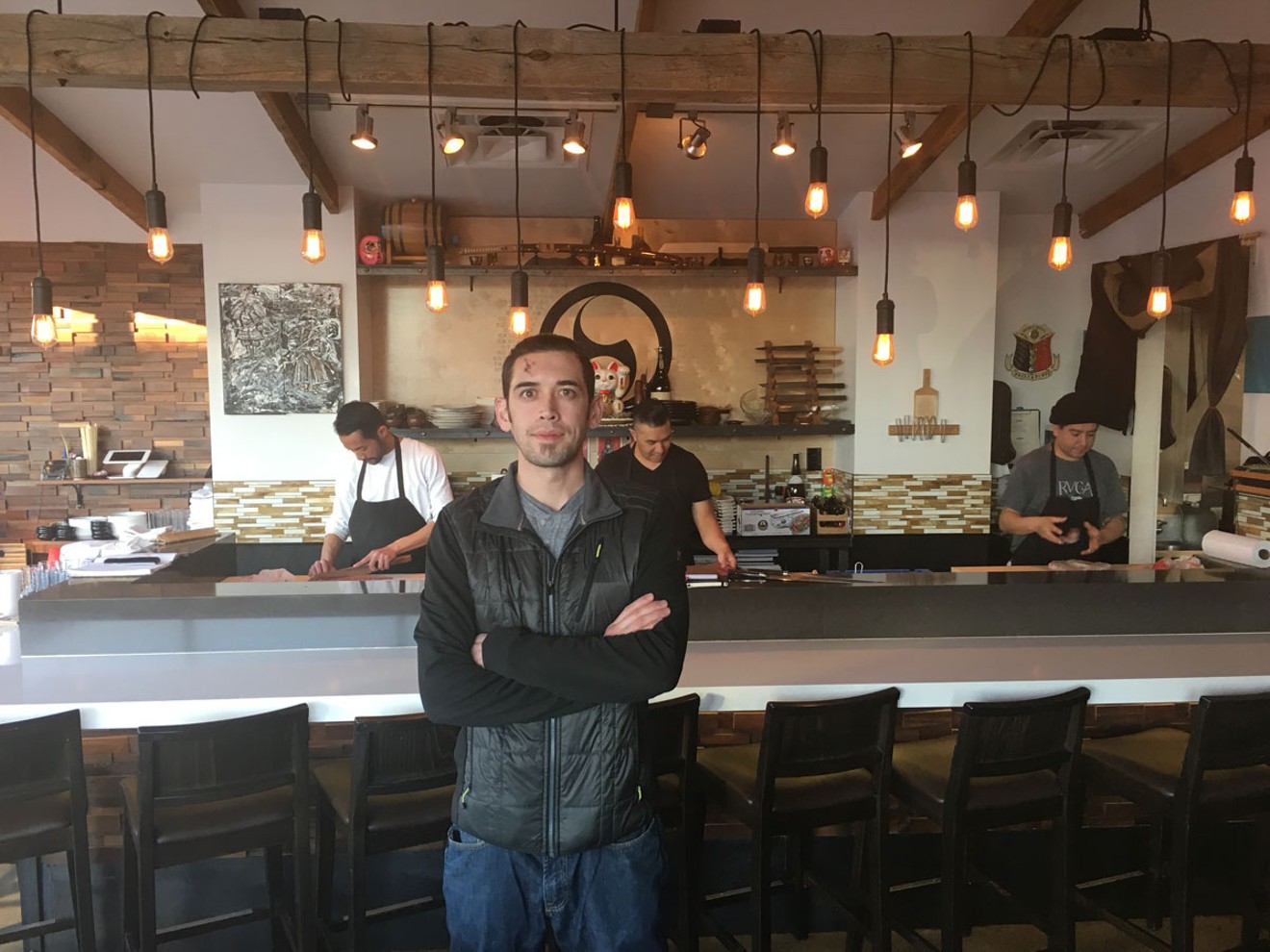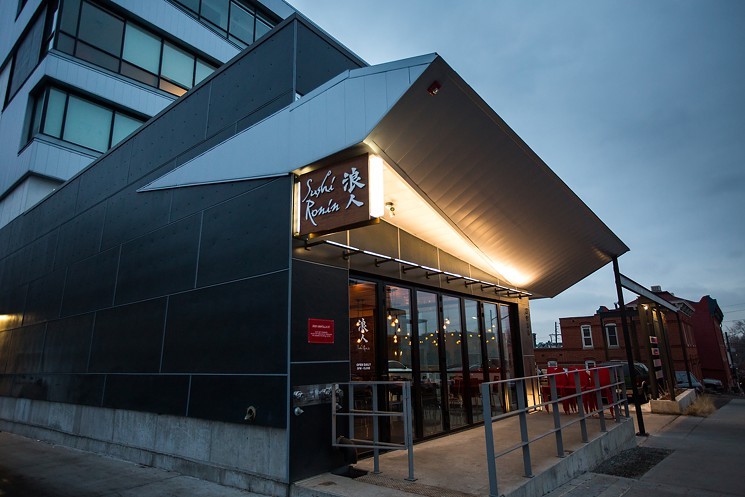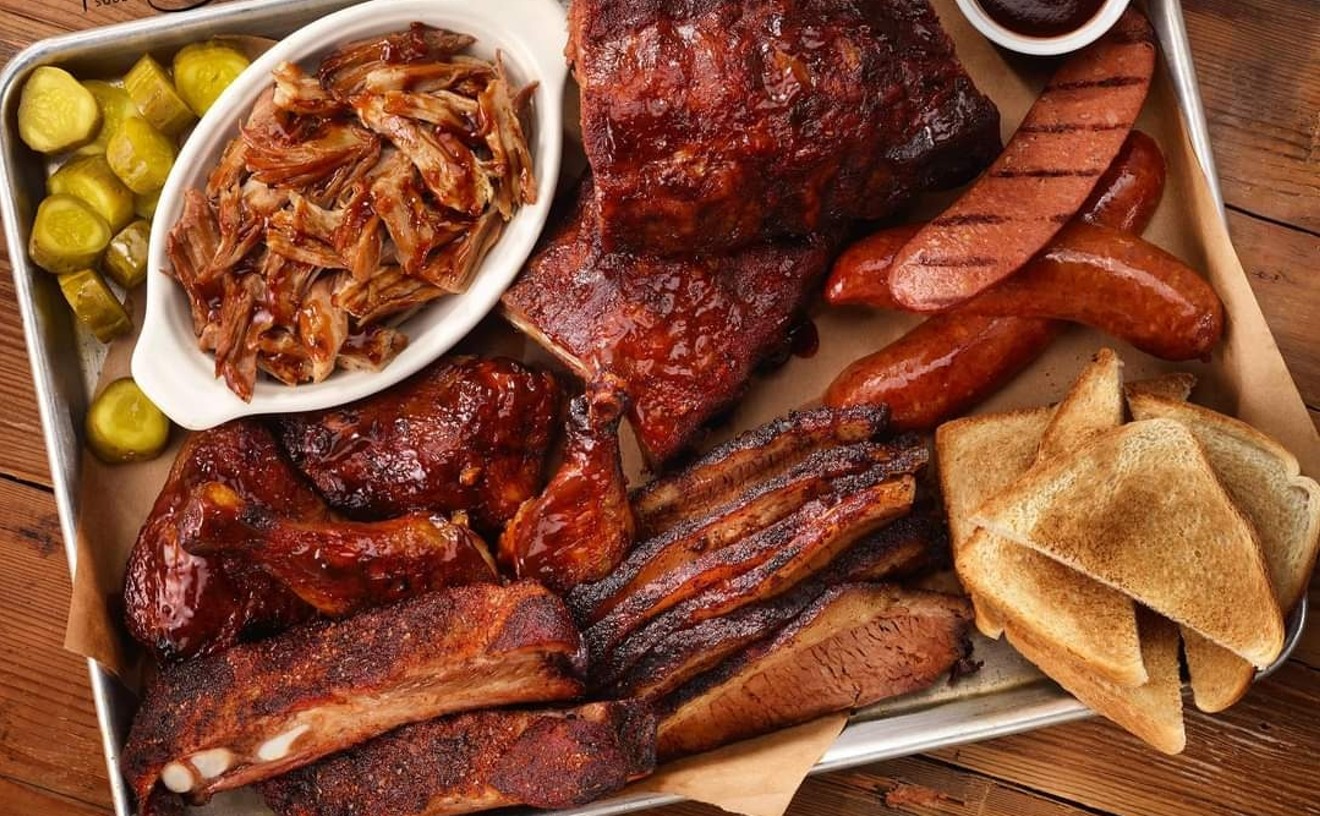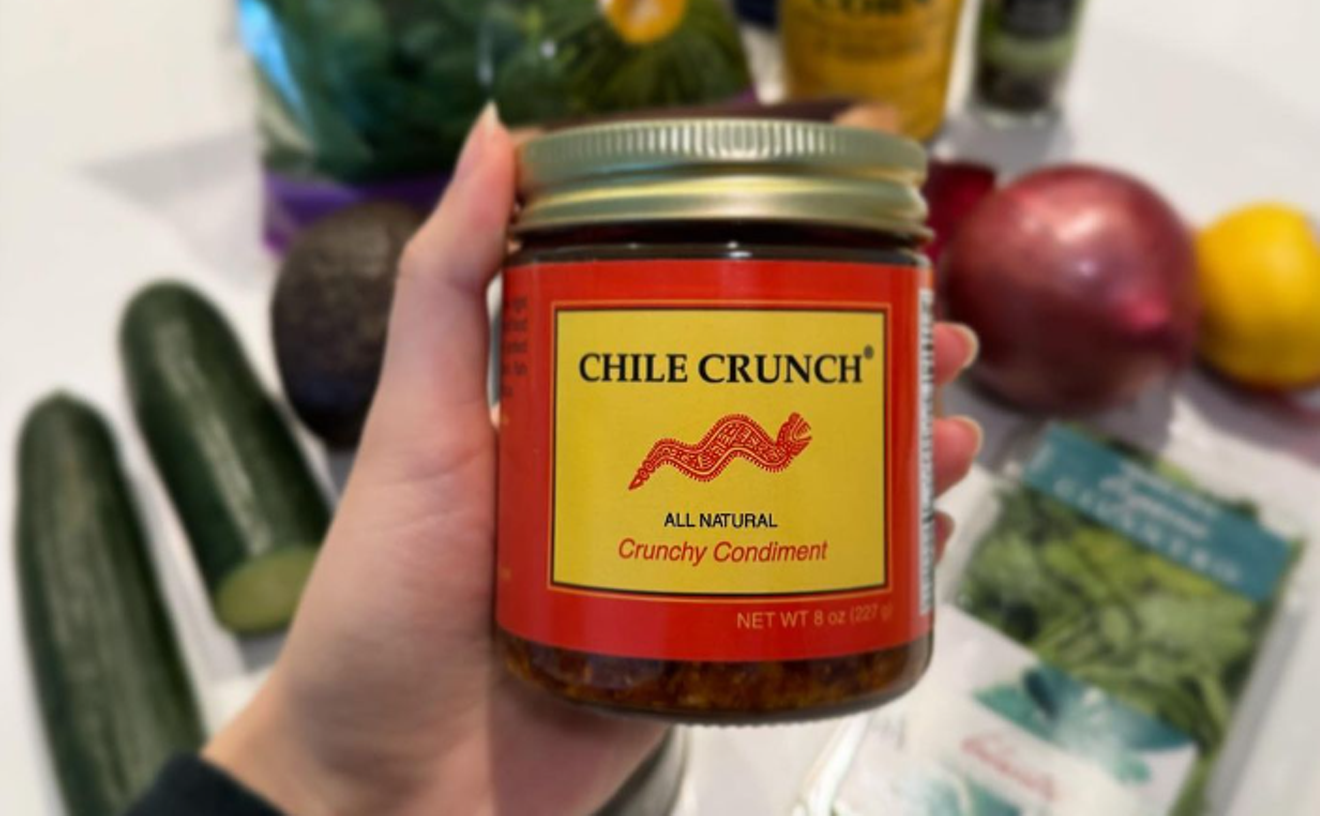Chef Corey Baker says he didn’t so much find sushi as fall into it — but doing so had an element of fate. “I got a job at Sushi Den...at age seventeen,” he recalls. “It felt kind of like destiny. Sushi Den was the first restaurant I went to: When I was born and just out of the hospital, my dad took me there and put me on the bar. That was six months after the restaurant opened. There’s a lot of nostalgia there. Getting into it felt natural.” He worked his way up the bar, from making rice and washing dishes to slicing fish and preparing special feasts. Baker eventually moved on to other Japanese restaurants, including Sushi Sasa, another temple of Japanese food in the Mile High. About a decade ago, he started thinking about opening his own place, and he started working on it in earnest about five years back. He and restaurateur Alexander Gurevich paired up, and he finally opened the doors to Sushi Ronin last January.
Baker recently sat down with us to talk about delicacies people are overlooking on the sushi menu, how sushi will change as issues of sustainability come to the fore, and why diners should embrace Sushi Ronin’s omakase experience.
Westword: Before opening Sushi Ronin, you spent most of your career working in Japanese restaurants, including Sushi Den and Sushi Sasa. What drew you to Japanese food?
Corey Baker: I’m obsessed with Japanese food, the flavors and colors. It’s just amazing. But the discipline behind it that is mandatory in a Japanese kitchen — a lot of people can’t handle it, but it’s the way I prefer; I’m semi-OCD. If you get that discipline and respect that, you go forward from there. You do things step by step — you might wash rice for six months to a year. You might move from that to cutting vegetables and end up cutting cucumbers for a year. The foundation of Japanese food is finding those skills that can put you in a place where you can be creative. Good sushi, and good food in general, comes down to the hands behind it.
And, in the case of sushi, extremely skilled work with a knife.
Knife skills are going to be very important. There’s a process for everything, from breaking down a fish to presenting it, from scaling to gutting to filleting. Every fish is different. Some have more bones, some you have to cure, some you need a marinade. For some fish, aging is important to get that right flavor; tuna, right out of the water, is sour. Tasting and preparing at the same time is important. Every Japanese kitchen is different, because every chef has a different palate. Some people can tell who trained you by how your food tastes.
That’s assuming, I’m guessing, that you’re making fairly traditional preparations of dishes. Where do you come down on the sushi that tends more toward the creative or even fusion end of the spectrum? Like rolls stuffed with cream cheese or wrapped in jalapeños?
In Japan, restaurants do the same thing every day — but if you do that in America, people get bored. They want more freedom and expression. You can’t train people who don’t want complete freedom. You want to get yourself established and then play. Chinese, Korean and Mexican sushi bars are probably the most creative, but they often strip away the traditional side of it. I try to keep that pure traditional form and then let my chefs or myself be off-the-cuff creative with each dish on a daily basis. Things change every day. A lot of people with different palates come in, and our challenge is to understand them without much talking. With that comes taking a simple traditional piece of fish and adding to it or taking away from it. For instance, if a Japanese person came in here, I could feed them traditional nigiri [slices of fish on pats of rice]. It would be super-pure. But if a younger couple that likes a little spice came in, I could take those nigiri and transform them into totally different pieces of fish, even though they’d be the same pieces of fish. Learning that is the base of omakase.
You’re a big proponent of omakase here, which is essentially a chef’s-choice menu. Talk me through that experience.
Our base omakase is really a daily menu of seven courses, and it goes through a little bit of everything that we serve. It’s not specifically built to overwhelm someone with too many new things, so we like to keep traditional flavors. The idea is to come in for the first time, sit down and experience everything we do. Then the second time you come in, you can have any of those dishes, because we have variations of them on our menu at all times. We give someone the experience to see what we do first and go from there. I only like to serve true omakase at the sushi bar, because it takes a little more understanding of the customer, and I can’t do that with someone all the way across the restaurant. In a more traditional omakase, I make you food until you tell me to stop. I gauge what to make off of your body language, off of how you’re feeling after that last bite. It’s a little more personal, but to do that for an entire restaurant is more difficult. That’s where I get my regulars.
Sitting at the sushi bar occasionally makes people feel like they need to observe the rules of eating sushi more fastidiously than they would at a table. Are any of those rules crucial?
Everyone has their own idea of what’s right and what’s wrong. But what sushi has become in the U.S. is not like it is in Japan, and in Japan, it’s not like it used to be. When I present fish, I might tell someone to add a little soy sauce, but that’s as far as I’ll go. I don’t want to get in the way of people eating sushi and experiencing it. The rule when you’re eating nigiri is to put the fish side in [the soy sauce] first and to barely dip, so the rice doesn’t fall apart. We pack the rice to a perfect amount of pressure, and it can explode in the soy sauce. That’s the reason that rule is there. It’s more about getting the best possible experience eating it. But for me, as long as you enjoy, if you want to make a bowl of soy-sauce soup, do what you want.
What about the wasabi slurry people are fond of?
That's like people who like hot sauce. Take pho: People like the concoction of sauce if there are sauces sitting on the table. I would never make a slurry, but that's because it overpowers everything. Put a little extra wasabi on the fish if you need it, but realize sometimes that it kind of destroys the taste, because you're adding something that's not supposed to be there.
You mentioned early that you’re drawn to the colors of Japanese food. Can you talk a bit about the importance of visual presentation in Japanese cuisine?
Presentation is the first thing the customer experiences. The visual presentation has to have a balance with the taste and flavors. If it looks good and flavors are off, or if it looks disheveled, it’s not going to match with the whole experience of the one plate. That’s kind of a big thing that I was taught. With sushi or Japanese cooking in general, everything has to be balanced, and that means everything from the angles to how much of one ingredient you’re putting on there: Too much could ruin an entire dish. Finding that balance is always going to be the trick.
What are people overlooking on the sushi menu in favor of tuna, salmon and eel?
Monkfish liver is a highly underrated dish. There are so many things you can do with it. It’s almost equal to foie gras, with less oil. I get a lot of Japanese fish that are white fish, and I get them whole. There’s an array depending on the season, and every one on the menu is completely different. They have different oil, texture and flavor, and they’re equally fantastic. Also, aji, or Spanish mackerel. A lot of people don’t have it because the shelf life is one and a half or two days; I get it every day, or five to six times a week. It’s like uni, or sea urchin: When it changes, it changes quickly, and it’s horrible.
What do you wish you could serve on this menu?
Japanese wagyu. It’s probably one of the best cuts of meat I’ve had in Japan and in the States, but a lot of people don’t label it correctly. It’s something I would like to segue into, but it takes a little more staff. As a small restaurant, you never know when it’s going to be busy, and it’s hard to gauge who’s going to want it. I know people would love to get wagyu, but the price is a deterrent. We’re slowly gaining people’s trust to be good quality. With wagyu, how you take care of it even after it’s been butchered, from the market to restaurant to the plate, is very important.
How are issues of sustainability and over-fishing going to change sushi restaurants going forward?
We have to get more creative on how we buy and source. I try to get as much as I can from farms that are sustainable and regulated, and where the fish are treated well. I also enjoy and know there’s demand for a lot of wild fish, though. I try not to order as much of it. I don’t get whole bluefins every day; I try to use farms for bluefin toro, because it’s an equally good product. Everyone is going to have to be more creative with how they use their fish. I’d love to move into fully sustainable fish for our sushi bar, but it also takes away a lot of fish.
Any lessons learned from owning your own restaurant?
Less is more. I'm very eclectic with stuff that I have in here, but I like to keep things basic and minimal. If you're a professional, keep the professionalism and passion, and everything will fall into place. And I try to hold on to my staff. It breaks my heart if someone leaves. We're a family, but I also try to make an environment that they don't want to leave. Creating security was one of the positive things I learned from Sushi Den; [owner Toshi Kizaki] always treated employees well. It was a hard job, and we had a lot of turnover because there were people who didn't want to work that hard. But people who wanted to work always had security. I think that's highly important.
Sushi Ronin is located at 2930 Umatilla Street, and open from 5-10 p.m. Sunday-Thursday, 5-11 p.m. Friday-Saturday. For more information, call 303-955-8741 or go to sushironindenver.com.
[
{
"name": "Air - MediumRectangle - Inline Content - Mobile Display Size",
"component": "12017618",
"insertPoint": "2",
"requiredCountToDisplay": "2"
},{
"name": "Editor Picks",
"component": "17242653",
"insertPoint": "4",
"requiredCountToDisplay": "1"
},{
"name": "Inline Links",
"component": "18838239",
"insertPoint": "8th",
"startingPoint": 8,
"requiredCountToDisplay": "7",
"maxInsertions": 25
},{
"name": "Air - MediumRectangle - Combo - Inline Content",
"component": "17261320",
"insertPoint": "8th",
"startingPoint": 8,
"requiredCountToDisplay": "7",
"maxInsertions": 25
},{
"name": "Inline Links",
"component": "18838239",
"insertPoint": "8th",
"startingPoint": 12,
"requiredCountToDisplay": "11",
"maxInsertions": 25
},{
"name": "Air - Leaderboard Tower - Combo - Inline Content",
"component": "17261321",
"insertPoint": "8th",
"startingPoint": 12,
"requiredCountToDisplay": "11",
"maxInsertions": 25
}
]














